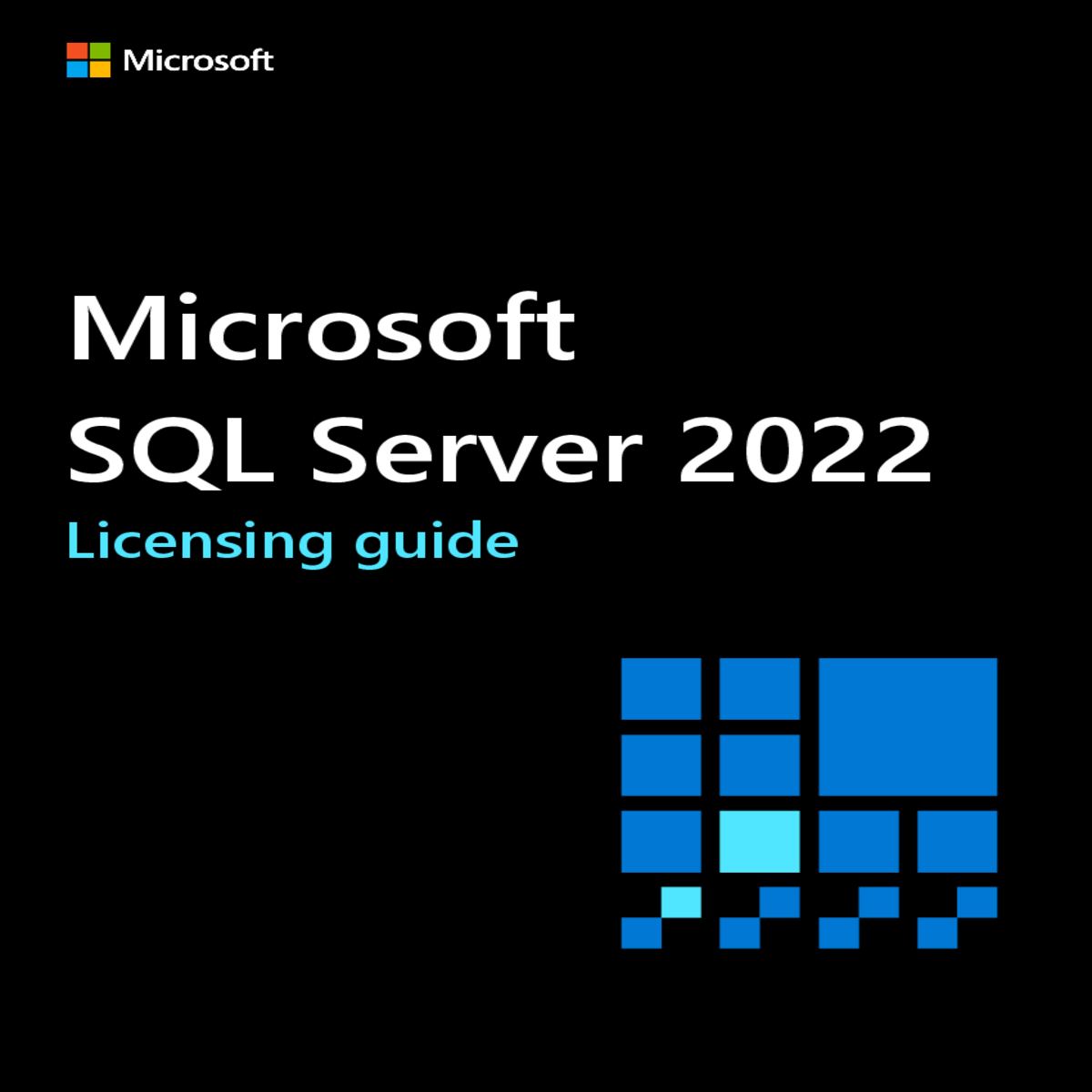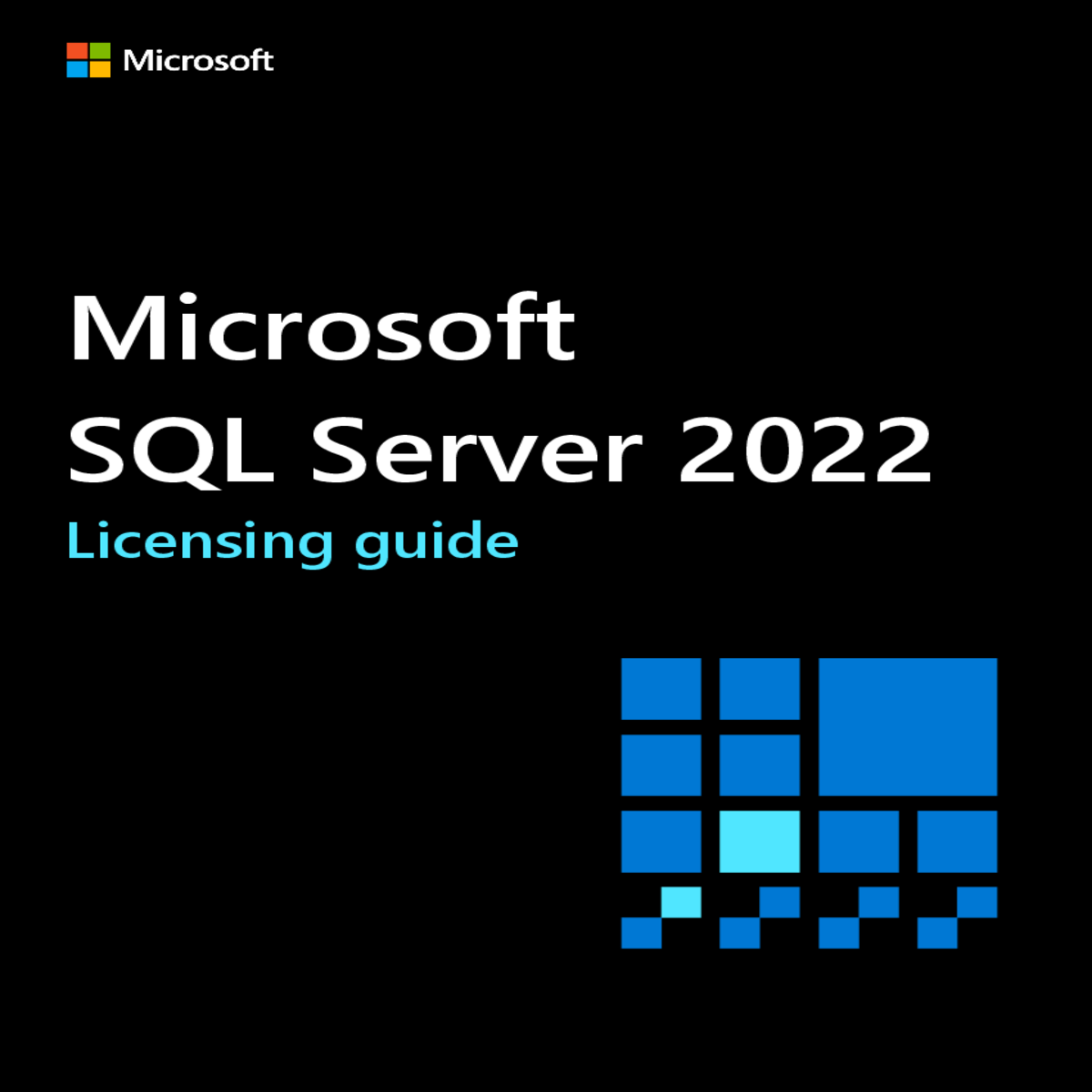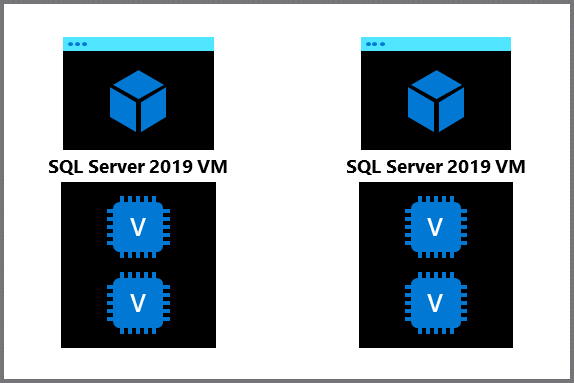Microsoft licenses sql server core-based licensing model
|
19 23 |
|---|
Microsoft does not set final prices or payment terms for licenses acquired through resellers. Final prices and payment terms are determined by agreement between the customer and its reseller. Eligibility for Software Assurance benefits varies by offering and region and is subject to change. The terms and conditions of your Volume License Agreement and the terms and conditions under which any specific Software Assurance benefits are offered will take precedence in the case of any conflict with the information provided here. For eligibility criteria and current benefit program rules, see the Microsoft Product Terms.
Overview
SQL Server 2022 is offered in two main commercial editions to accommodate the unique feature, performance and price requirements of organizations and individuals:
| • • |
|
|---|
Enterprise Edition continues to deliver the highest levels of mission critical scalability, availability, and performance as well as maximum virtualization rights with Software Assurance.
Note: SQL Server 2022 was released on November 16, 2022 for EA/EAS, MPSA, Select+, and Open Value customers. Any customer that acquired SQL Server licenses through one of those designated channels on November 16, 2022 or later is entitled to run SQL Server 2022 software with those licenses once the media is made available to them between November 2022 and January 2023. SQL Server 2022 will be released in CSP in January 2023.
| (limited to 2 | ✕ | |
|---|---|---|
| threads, |
over 64GB
Mem only)
Other specialty editions of SQL Server 2022 include Developer Edition, which is licensed for non-production use; the freely downloadable and distributable Express Edition. SQL Server Web Edition remains available only under the Microsoft Services Provider License Agreement (SPLA).
*Analysis Services and Reporting Services are available for Windows Server only
• mpute capacity limits for each edition of SQL Server, visit
For SQL Server, using these benefits can help customers improve productivity and help IT efficiently deploy and manage SQL Server software. As hardware capacity and licensing needs expand, SQL Server customers with SA coverage can enjoy the benefit of adding incremental licenses without worrying about the software version licensed. Software licenses and use rights are version-specific and as such, licenses for different software versions cannot be combined when licensing a single operating system environment. As a benefit of having access to the latest version of SQL Server software, SA customers licensed under the core licensing model (for example) can easily combine current version core licenses with future version core licenses, without the need to track or otherwise reassign covered licenses based on software version alone.
Customers purchasing subscription licenses through the Microsoft Customer Agreement (MCA) benefit from some of the same rights as customers with Software Assurance, such as access to the latest versions, fail-over rights, unlimited virtualization, the Flexible Virtualization Benefit, the option to license by virtual machine and the Azure Hybrid Benefit, see the Product Terms for details. Subscription licenses through the MCA do not include License Mobility through SA.
| Software Assurance benefits overview |
|---|
|
|
|---|---|
|
|
© 2022 Microsoft Corporation. All rights reserved. This docuicrosoft makes no warranties, express or implied, in this document. For more information on how to buy SQL Server, please visit 9
For example, by combining SQL Enterprise Edition with the benefits provided through SA (or subscription
Take advantage of high availability and Disaster recovery scenarios at no additional licensing cost
• Generate data visualizations on premises with Power BI Report Server
For more information on how to buy SQL Server, please visit 10
How SQL Server licenses are sold
Server and Cloud Enrollment
• For more information about Microsoft Volume Licensing Programs, download the Volume Licensing
Reference Guide at
Microsoft offers a variety of SQL Server licensing options aligned with how customers typically purchase specific workloads. The Server+CAL licensing model provides the option to license users and/or devices and then have low-cost access to incremental SQL Server deployments. For customers who cannot count users or require premium database capabilities, Microsoft licenses SQL Server in a core-based licensing model. Core-based licensing gives customers a more precise measure of computing power and a more consistent licensing metric, regardless of whether solutions are deployed on physical on-premises servers, or in virtual or cloud environments.
|
|---|
This table compares the licensing options for each of the main SQL Server editions.
| ● | |
|---|---|
| ● |
This figure depicts the representations of the physical server, physical processor, physical and virtual cores, virtual machines and containers that are used in this guide.
2.Purchase the appropriate number of core licenses required for the server. Core licenses are sold in packs of two, so customers must divide the number of licenses required by two to determine the actual number of line items (licensing SKUs) to order.
For more details on the per core licensing model, includinons, download the Introduction to per core LicensingVolume Licensing Brief
|
|---|
When licensing the SQL Server Standard Edition software under the Server+CAL model, customers purchase a server license for each server, and a client access license (CAL) for each device (Device CAL) and/or user (User CAL) accessing SQL Server or any of its components. A CAL is not software; it is a license granting users and devices access to the SQL Server software.

Note: The use of hardware or software that reduces the number of devices or users that directly access or use the software (multiplexing/pooling) does not reduce the number of CALs required. For details on how to license SQL Server in a multiplexed application environment, refer to the Advanced licensing scenarios section of this guide.
© 2022 Microsoft Corporation. All rights reserved. This docuicrosoft makes no warranties, express or implied, in this document. For more information on how to buy SQL Server, please visit 15
© 2022 Microsoft Corporation. All rights reserved. This docuicrosoft makes no warranties, express or implied, in this document. For more information on how to buy SQL Server, please visit 16
Licensing SQL Server in a virtualized environment
How to license individual virtual machines using the Per Core licensing model
© 2022 Microsoft Corporation. All rights reserved. This docuicrosoft makes no warranties, express or implied, in this document. For more information on how to buy SQL Server, please visit 17
1.License the virtual cores in each virtual machine
2.There is a minimum of four core subscription licenses or licenses with Software Assurance required for each virtual machine
This figure illustrates the licensing requirements for three different virtual machines under the Per Core licensing model.
Additional licenses are required when:
• A single hardware thread supports multiple virtual cores. (A core
subscription license or license with Software Assurance is required for
each v-core.)
Note: Each user or device accessing SQL Server software, regardless of a virtual or physical deployment, requires a SQL Server CAL (for the same or a later version).
For details on how to license individual VMs with legacy SQL Server Enterprise Edition server licenses, please refer to the Additional product information section of this guide.
| 1 | 1 | |||||
|---|---|---|---|---|---|---|
|
1 | 1 | 1 |
|
Note: This benefit ends when the subscription licenses or SA coverage expire(s).
Licensing for maximum virtualization can be an ideal solution when:
with Software Assurance
2.Deploy an unlimited number of virtual machines
| 12 | ||
|---|---|---|
| 12 |
|
Shown is an example of licensing a 12-core physical server for unlimited VMs with Enterprise Edition core subscription licenses or licenses with SA.








